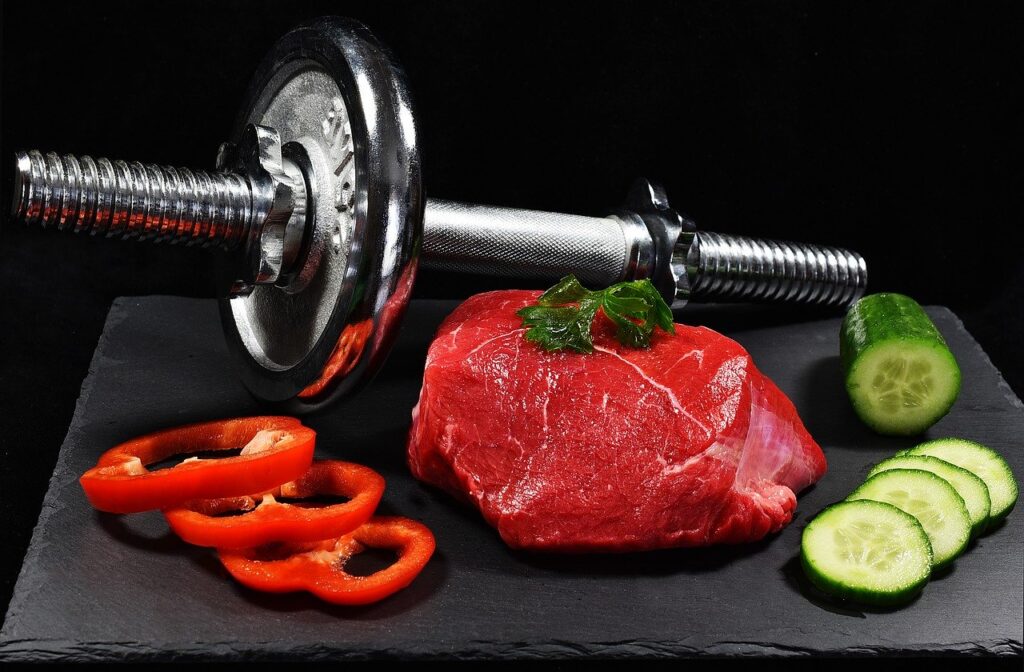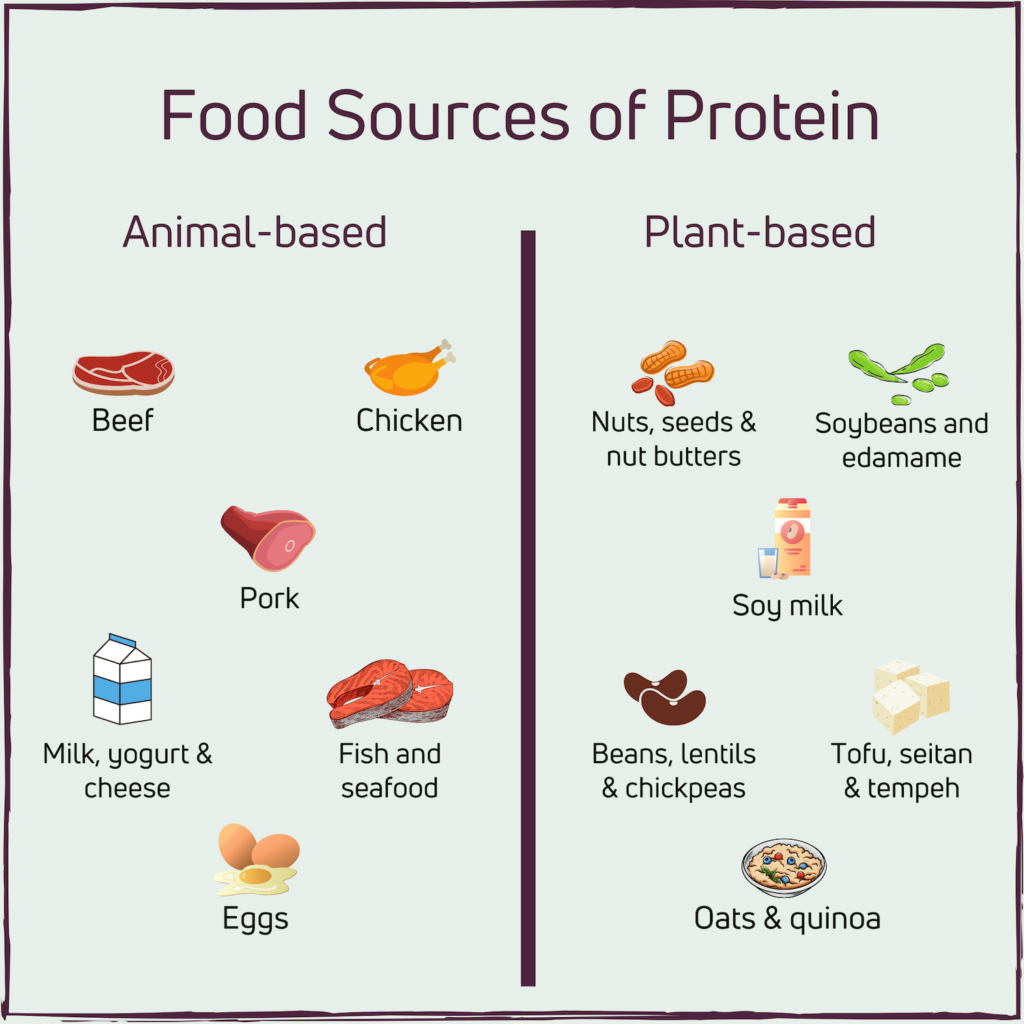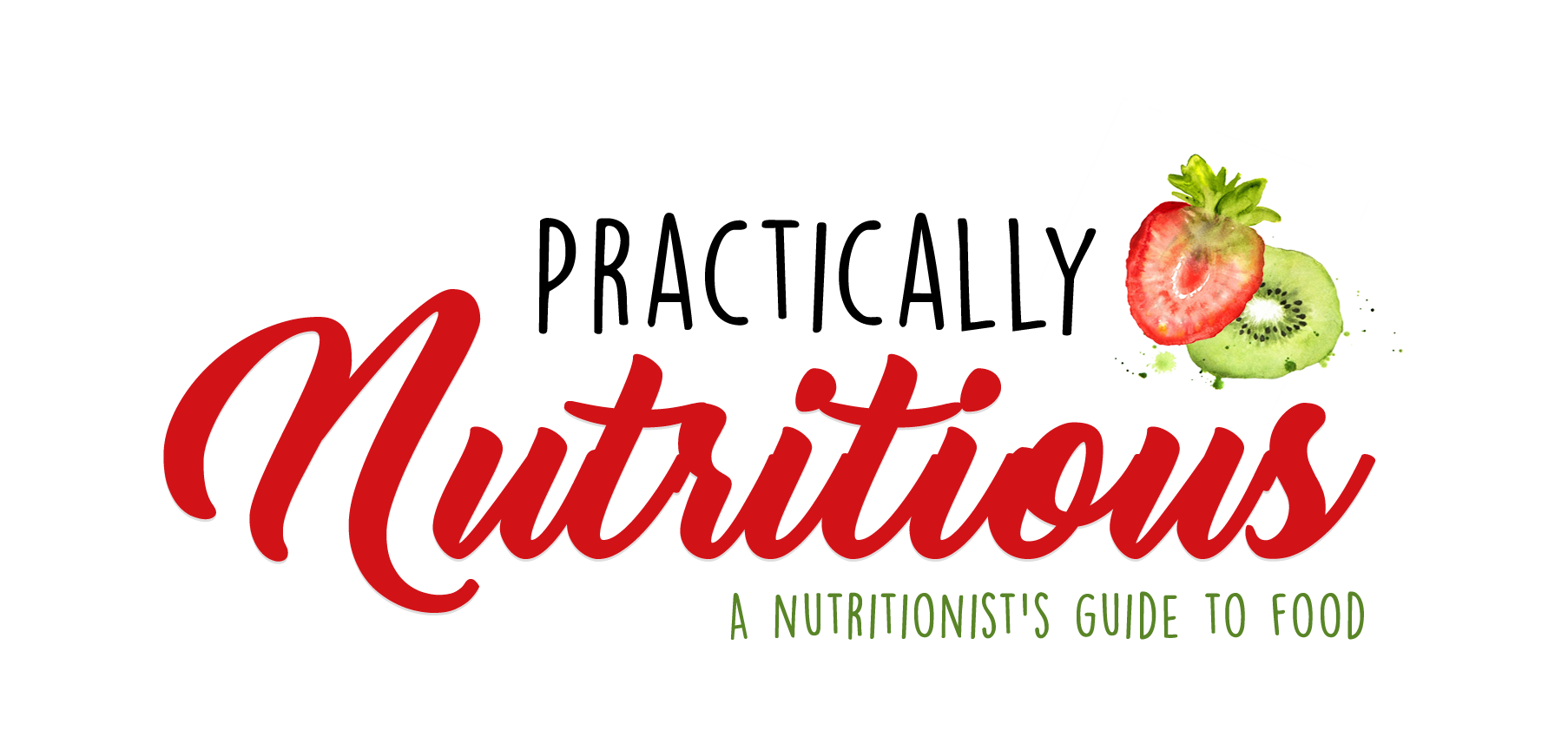What is protein?
Protein is one of the three macronutrients. A macronutrient is a nutrient that gives us energy (in the form of calories). Protein, carbohydrates, and fat are all macronutrients in that they provide energy.
Other than providing us with energy, protein is also used by our bodies for many different important functions, including growth, building muscles, healing, and immune function. If we don’t get enough protein or calories in our diet, our body starts breaking down our muscles in order to get usable protein. Loss of muscle mass can become a serious issue because it can reduce our strength and functional ability, which is one reason it’s important to eat enough protein.

Amino acids – essential and non-essential
All macronutrients are made up of smaller units. For protein, these smaller units are called amino acids. There are 20 different amino acids that make up the protein in our bodies. There are thousands of different types of proteins, and the main reason protein is so versatile is because the 20 amino acids can be chained up in a multitude of different ways. These amino acids give proteins their unique characteristics.
Now, not all amino acids are created equal. Specifically, some amino acids can be made by our bodies, while others cannot. The nine amino acids that we cannot make ourselves are called essential amino acids, and we need to get them from our diet. The eleven amino acids that we can make ourselves are called non-essential amino acids.
How much protein do I need?
Currently, the recommendations for most adults is to get about 0.8 grams of protein per kilogram of bodyweight. So, for example, if you weigh around 80 kilograms (175 pounds), you would need about 64 grams of protein per day (0.8 grams times 80 kg) at minimum. However, recent evidence suggests that we actually need more than this, and that a better estimate is around 1 gram of protein per kilogram. So, if you weigh 80 kilograms, your protein requirements are probably around 80 grams of protein per day (it’s an easy calculation!). I would suggest using this estimate if you would like to know how much protein to consume per day.
Keep in mind that some people need more protein. This includes children/teens, older adults, pregnant and lactating women, and those who are sick. For example, cancer patients may require up to 2 grams of protein per kilogram of body weight (double that of the healthy adult). Another example is COVID-19 patients, who could require anywhere from 1.2 to 2 grams of protein per kilogram of body weight. In both of these instances, the reasons for the extra protein is that sick patients experience inflammation, which makes it harder to retain their body protein and makes them lose protein at a higher rate. So, just to maintain their muscle mass, they need more protein.
Another subset of people who may need or want to have more protein in their diets are those who exercise frequently and those who are trying to lose weight. In both instances, the body needs more protein to maintain and continue building on your existing muscle mass. If you want to find out more about your individual protein needs, I suggest you consult a registered dietitian.
What foods contain protein?
First, I’d like to mention that if you are a relatively healthy adult with a varied diet, you are most likely getting enough protein. Most people in North America eat more than enough protein, so lacking protein in your diet is usually not a concern. But for those who need more protein than average, or those who are vegan or vegetarian, it may be important to keep protein in mind when planning meals to make sure you get enough.
You can find protein in a wide range of foods. This includes animal-based sources like meat, chicken, fish, eggs, and dairy. Plant-based sources include legumes, nuts and seeds, some grains, and soy products like tofu.

Protein complementation
Remember those essential amino acids? Turns out that plant-based sources of protein usually don’t contain all of them. This means that if you follow a mostly plant-based diet (I’m thinking vegans, vegetarians and even flexitarians and pescatarians), it’s important to eat a variety of protein-containing foods in order to get all of the essential amino acids you need.
For example, legumes like chickpeas, lentils and beans are missing an amino acid called methionine. Luckily, methionine is relatively abundant in grains, like rice and wheat. On the other hand, grains contain relatively little lysine, which can be found in legumes. So, pairing legumes and grains allows you to get all of your essential amino acids. This doesn’t necessarily have to be in the same meal, but in general it’s preferable to try to vary up your sources of protein to make sure you get everything you need.
Here are some pairing ideas:
- Adding barley to your lentil soup
- A bean salad with nuts
- Pita and hummus
- Corn tortilla with black beans

One Reply to “Your Simple Guide to Protein”
Comments are closed.